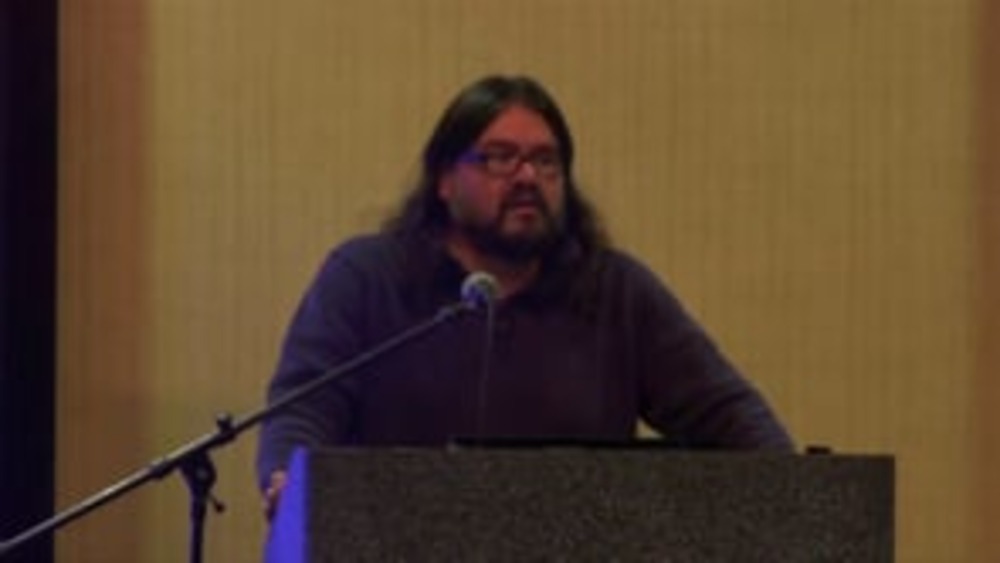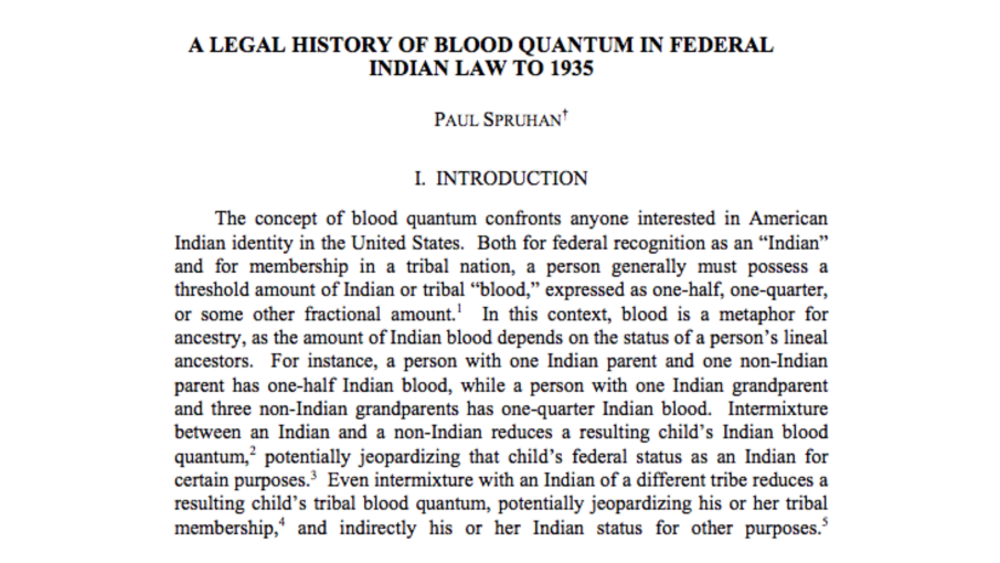Several Native leaders and scholars discuss the growing movement away from blood quantum as a primary criteria for determining eligibility for citizenship in Native nations.
Additional Information
Coates, Julia. "The Process of Constitutional Reform: What the Cherokee Nation Did and Why." Tribal Constitutions seminar. Native Nations Institute for Leadership, Management, and Policy, University of Arizona. Tucson, Arizona. May 2, 2012. Presentation.
Ettawageshik, Frank. "Reforming the Little Traverse Bay Band of Odawa Constitution: What We Did and Why." Tribal Constitutions seminar. Native Nations Institute for Leadership, Management, and Policy, University of Arizona. Tucson, Arizona. May 1, 2012. Presentation.
Gray, James R. "Educating and Engaging the Community: What Works?" Remaking Indigenous Governance Systems seminar. Archibald Bush Foundation, Saint Paul, Minnesota; and the Native Nations Institute for Leadership, Management, and Policy, University of Arizona. Prior Lake, Minnesota. May 3, 2011. Presentation.
Hershey, Robert. Native Nations Institute for Leadership, Management, and Policy, University of Arizona. Tucson, Arizona. October 6, 2010. Interview.
Transcript
Robert Hershey:
“You know, when we did an analysis of the provisions of constitutions on membership, we thought that blood quantum would probably be the number one criteria, number one factor, for the determination of who can or cannot be a citizen/member of the tribe. And it was actually lineal descendancy. So I think that there’s an increasing tendency in revising membership criteria, that going to lineal descendancy -- probably residents on the reservation and lineal descendancy.”
Julia Coates:
“Culture doesn’t flow in our bloods. It’s something that we take on, and that investment, that understanding of nationality and of the people and of the communities is also something else that we can take on to greater and greater degrees and make those investments. So to me, those other categories, it’s not about where people are in a fixed way, but it’s about what people can become, and I think that that’s what we have to, we have to open the doors for those possibilities, for those potentials, because if we don’t, we’re just going to have people drifting away into the generations. We’re not going to be able to retain anybody with these very limited and fixed sorts of categories that we seem to be holding to.”
Jim Gray:
“The membership issue was incredibly critical for us to move forward. Having left so many Osages out of the political process for so long, the political pendulum swung the other way completely. And the attitude that the Osage people had -- once we had our sovereignty recognized so that we could determine who our own citizens were -- we wanted to include as many Osages as possible. And the only way we did that was through the lineal descendancy definition of that 1906 roll. That eliminated the blood quantum issue, that eliminated the residency issues. We wanted every voice, every Osage we could possibly count included in our government. And by doing that, we left nobody out, and at the same time, it did create its own set of problems, and I’m not going to sugarcoat that either, because there was a lot of people who were mixed blood, full blood, that really resented the fact that there were others that did not have that kind of blood quantum in their situation having equal status. There were Osages that had language issues. ‘If you can’t speak the language, you shouldn’t be Osage.’ We had Osages that said if you don’t live on the rez or the three districts, you’re not Osage. We had Osages that said, ‘If you don’t own land and you’re not a shareholder, you’re not Osage.’ So, realizing that there was no one answer that was going to fix all the problems, we took the one that included the most amount of people and made that work. Even to take it one step further, we did include dual memberships so that if you were Cherokee, for example, and Osage, you could be registered in both tribes. Because I think Cherokees have dual membership as well.”
Frank Ettawageshik:
“If you chose, you could become a naturalized citizen of most of the nation states in this world, and it would require renouncing other citizenships in some cases, some cases it doesn’t, but you could go and you could study and you could learn and you could take a test so that you had the basics of what you needed to be a citizen. And somewhere along the line people started looking at us and thinking in terms of blood quantum, and they started to use it as a way of measuring us. And they sold it to us. They sold it to us so well that we think it’s our own idea now. Well, this whole concept of tying citizenship to blood quantum is something that we’re going to really have to think about in the future, because we have people who -- at home we refer to people that are -- we say ‘apples’ -- they’re red on the outside but white on the inside. In other words, they have, they look Indian, they maybe have an Indian name or Indian family name, but they haven’t lived the culture, they don’t know the language, they don’t live on the reservation, and some of them don’t even live anywhere near other Natives, and yet they still would meet the blood quantum requirement for being a citizen of our nation. Some people talk about when the blood quantum gets diluted we lose a lot. Well, it isn’t just the blood quantum. When the knowledge of our culture and our language and the tie to our land gets diluted, have we not also lost just as much? And so somehow we have to be thinking about what it means to be a citizen and we need to think of, ‘If we were going to have a naturalized citizen of each of our tribal nations, what is it that we would require of that person to become a naturalized citizen?’ Now, under all the regulations with the Bureau [of Indian Affairs] and all these other things, though we could never get any funding for this person, so we would have to think about what that meant, and there’s all these other different issues that are out there. But we shouldn’t be thinking about that as the criteria for what our citizens are, for what citizenship is, because that citizenship is really what’s going to perpetuate us in the long run.”


